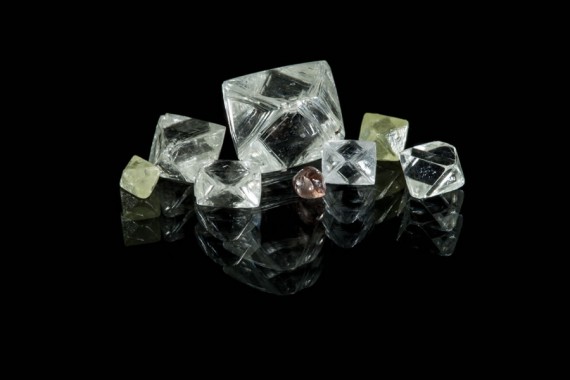Nunavut diamond mine proposal draws concerns for wildlife, environment
The De Beers Group is proposing a diamond mine in South Baffin, about 120 kilometers from Iqaluit.

Concern for caribou and polar bear populations is prominent in the responses from governments and northern organizations to De Beers Canada’s proposal for its Chidliak diamond mine project.
De Beers submitted its project proposal to the Nunavut Impact Review Board on Sept. 7. The mine will be located off the Hall Peninsula, about 120 kilometers from Iqaluit.
The responses also expressed concern for the mine’s impact on Inuit harvesting lands as well as on wildlife in the area.
De Beers spokesperson Terry Kruger told Nunatsiaq News the company understands its responsibility to ensure no harm comes to land, water and wildlife.
“We are now in the process of reviewing the comments and we look forward to working with all reviewers as we move through the next steps in the NIRB process,” Kruger said.
The area being explored by De Beers is 42,000 hectares in size and includes 74 kimberlites, which are the rocks that contain diamonds.
In its proposal, De Beers stated 36 kimberlites in the project area will be used, with a small open or underground mine at each kimberlite.
The project site will include an airstrip, quarry and access road and there would be 300 personnel at the site. If approved, the mine could open as early as 2026 and its closure phase would start in 2045.
De Beers said it has had consultations with key local groups and individuals in the two closest communities, Iqaluit and Pangnirtung, including hunters and trappers organizations.
The company also said it will work to minimize its impact on the area by prioritizing low-carbon efforts for mining, such as using technology that will allow its processing plant to be mobile.
That also includes possibly using wind, solar, electrical or nuclear as energy sources for the mine. It is considering extending a powerline from Iqaluit, to be more energy efficient.
However, regional organizations and government agencies still expressed concerns in their comments on the proposal.
Chris Spencer, manager of regulatory affairs for the Qikiqtani Inuit Association, said QIA is concerned for caribou calving grounds that may be affected on South Baffin because of the mine.
He added caribou populations are already seeing decline.
In terms of De Beers’ attempts at a lower carbon, mobile mine, Spencer noted that the technology has not been used yet in the Arctic.
“The QIA must be engaged in this process to ensure that any preferred option(s) adequately reflect Inuit interests, priorities, including adequate integration of Inuit Qaujimajatuqangit (IQ principles),” Spencer wrote of the assessment of the mine.
Speaking for the Qikiqtaaluk Wildlife Board, its director of wildlife and environment Michael Ferguson wrote that a mine could have a long-term impact on caribou, since that animal’s population cycles can last a human lifetime.
“When caribou densities are low, and when caribou distributions are limited and scattered, as they are currently, caribou are known to be especially sensitive,” Ferguson said of the mine’s potential disturbance of caribou.
Agnes Simonfalvy, the Avatiliriniq co-ordinator for the Government of Nunavut, wrote that with the economic opportunity plus the potential environmental impact of a diamond mine, the project is likely to gain significant local attention.
She said that outside of caribou, the diamond mine’s location also overlaps with the summer polar bear population. Polar bears are listed federally as a species of concern, she added.
The federal department of Crown-Indigenous Relations and Northern Affairs Canada also acknowledged the economic opportunities and environmental concerns the mining project presents, but added Inuit employment and businesses should be prioritized if the project goes ahead.
All regional organizations and government agencies stated more information on the mining project would be needed before they could fully assess whether it is feasible.
De Beers has said it will provide more information once it concludes its pre-feasibility study of the project in 2023.
According to a guide produced by De Beers, the approximate timeline of a Nunavut Impact Review Board review is 283 to 400 days before it recommends a project’s approval or rejection to the federal government.
That includes looking over the technical aspects of a project.